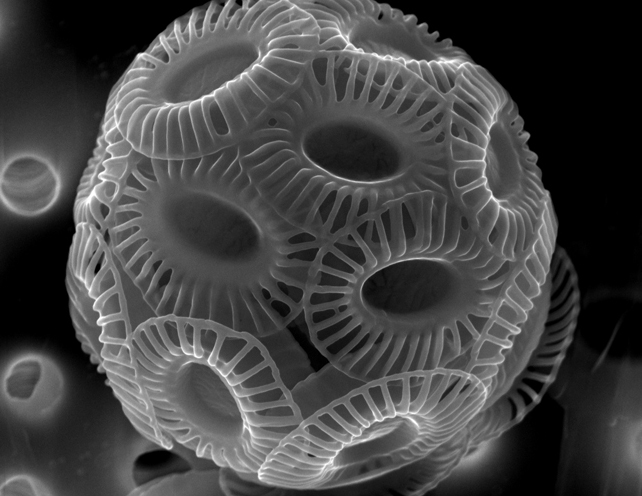Sustainability
The world's oceans are of profound importance in controlling the world's climate but how are they changing in response to human activity?

It's generally not recognised by the wider public just how important
our oceans are.
Here are two staggering facts:
- 50% of the world's oxygen is formed in the ocean; the southern ocean creates essentially as much oxygen as the Amazon rainforest.
- All of the carbon dioxide created by humankind will eventually be sequestered away in the oceans by reacting with carbonate minerals.
Even more amazing is the fact that this oxygen production and indirectly the sequestration of carbon dioxide is caused by the presence of phytoplankton; microscopic plants. These plankton are the base of the marine food chain supporting life throughout the oceans. Although small in size there can be so many present at the surface of the sea that blooms of plankton can be observed from space. Importantly phytoplankton are not a single family of organisms; there are approximately 25,000 known species including bacteria, dinoflagellates and algae. Of these groups, the coccolithophores are particularly interesting, These single cellular organisms encrust themselves in plates (liths) of nano-structured calcium carbonate. The image at the top of this page is a scanning electron microscope image of one such coccolithophore, Emiliania huxleyi, where the protective mineral plates can be clearly seen. Furthermore, given they are not farmed and that they have short life spans (ca. days) they have been called 'beacons of climate change'.
The aim of this project has been to create a new high-throughput method to:
- identify and determine the number density of different phytoplankton groups and
- assess the amount of calcium carbonate per plankton cell.
References
[1]Batchelor-McAuley, Christopher and Yang, Minjun and Rickaby, Rosalind EM and Compton, Richard G
Calcium carbonate dissolution from the laboratory to the ocean: kinetics and mechanism,
Chemistry--A European Journal 2022 View Article »
[2]Fan, X. and Batchelor-Mcauley, C. and Yang, M. and Barton, S. and Rickaby, R.E.M. and Bouman, H.A. and Compton, R.G.
Quantifying the Extent of Calcification of a Coccolithophore Using a Coulter Counter,
Analytical Chemistry 2022 View Article »
[3]Yang, M. and Batchelor-McAuley, C. and Barton, S. and Rickaby, R.E.M. and Bouman, H.A. and Compton, R.G.
Opto-Electrochemical Dissolution Reveals Coccolith Calcium Carbonate Content,
Angewandte Chemie - International Edition 2021 View Article »
[4]Yang, M. and Batchelor-Mcauley, C. and Chen, L. and Guo, Y. and Zhang, Q. and Rickaby, R.E.M. and Bouman, H.A. and Compton, R.G.
Fluoro-electrochemical microscopy reveals group specific differential susceptibility of phytoplankton towards oxidative damage,
Chemical Science 2019 View Article »